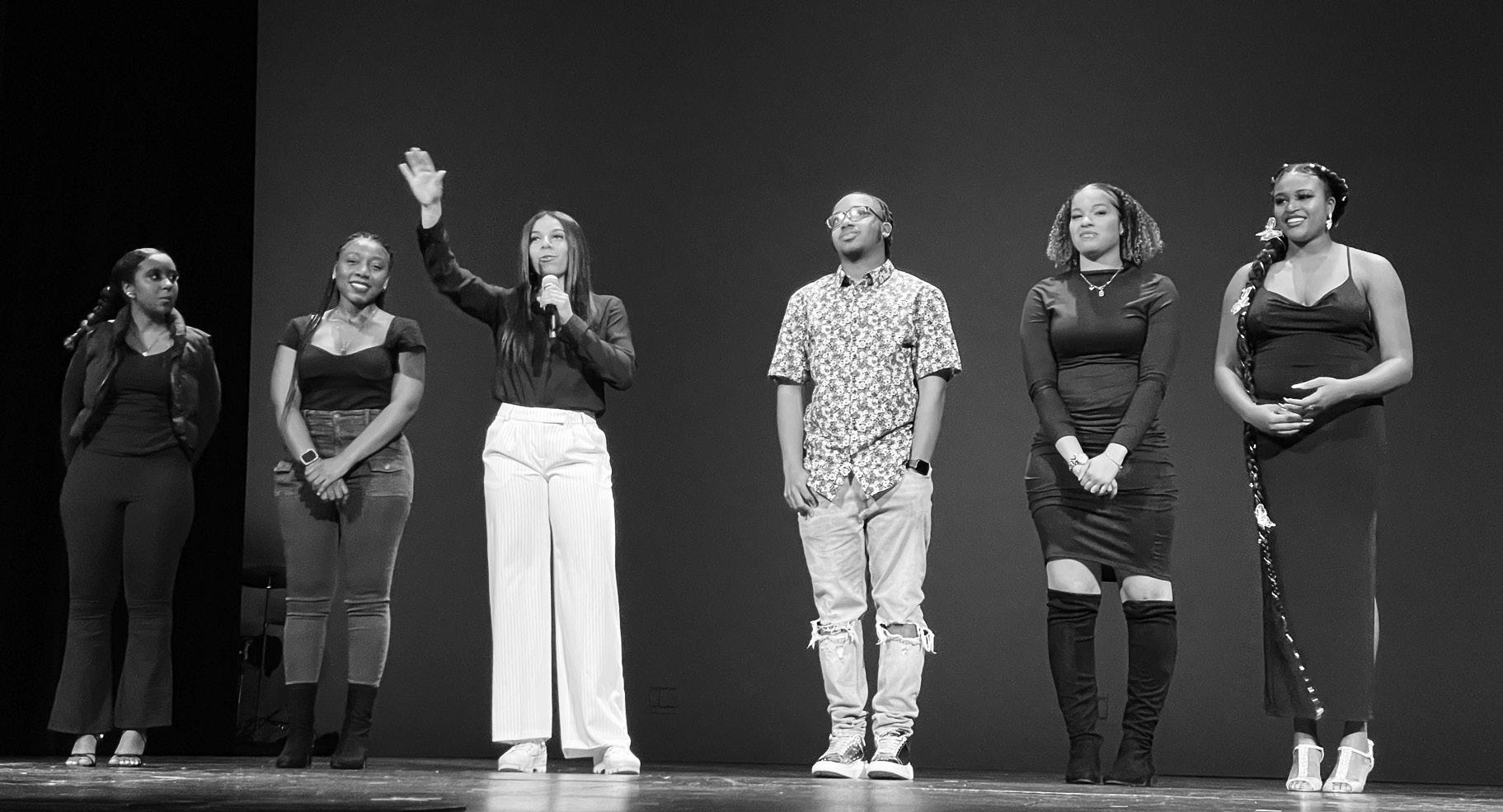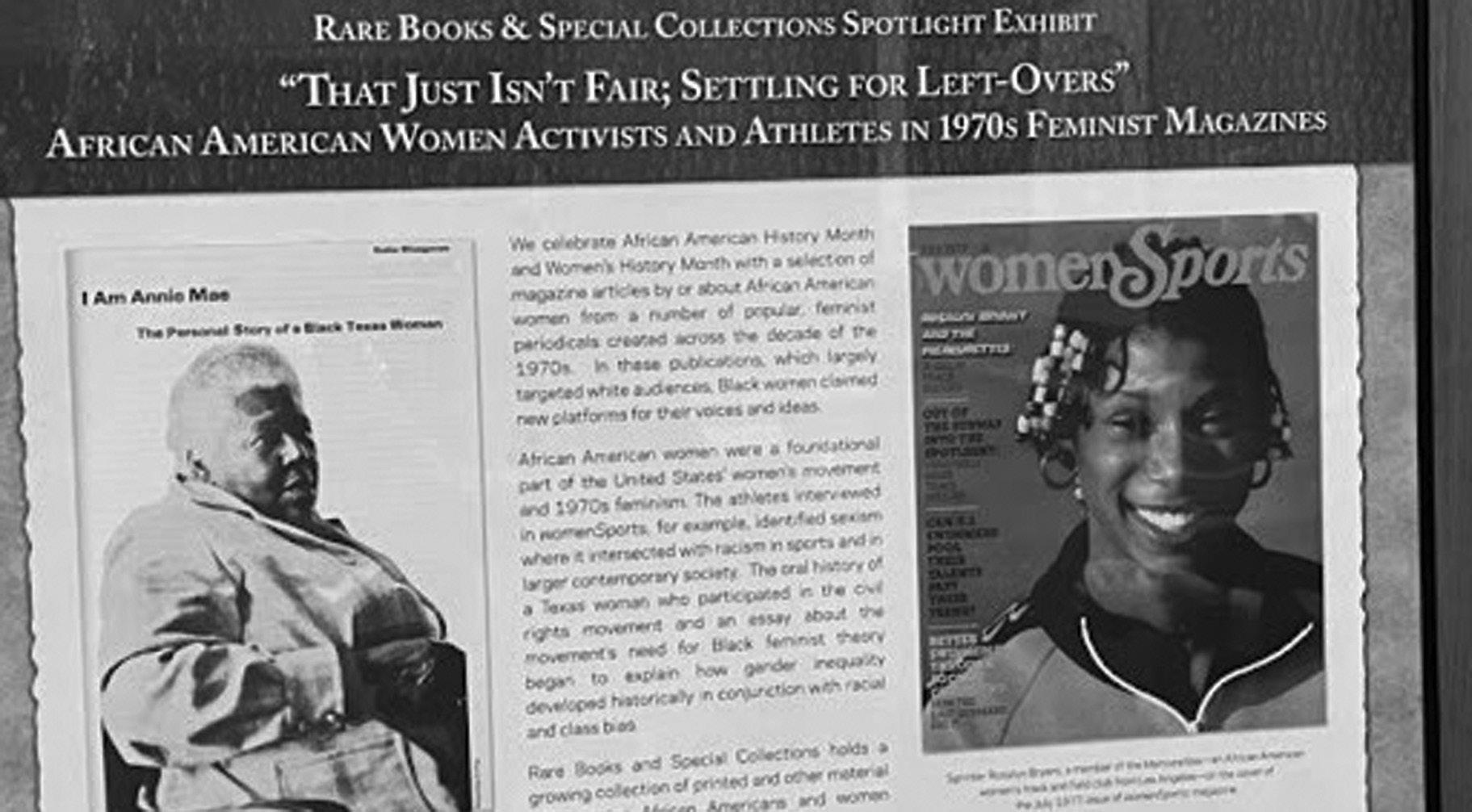
4 minute read
hesburgh library presents rare book collection
By ROSE ANDROWICH news Writer
The r are b ooks s pecial c ollection ( rbsc ), in honor of b lack history month and women’s history month, is curating a special collection called “That just isn’t fair; settling for leftovers.” The collection explores the experiences of b lack women athletes and b lack women’s involvement in culture and politics.
Advertisement
The collection was curated by r achel b ohlmann and Greg b ond. b ohlmann is an American history librarian and curator for the University, while b ond is a sports archivist and researcher.
The collection features various magazines, one of them founded by a famous female tennis player. b ond discussed the Women’s s ports m agazine and its founder.
“It was founded by b illie Jean King. s he was the founding publisher, famous tennis player, in 1974. I believe it was published and one of the first mainstream magazines [that] really focused on women in sports. I knew we had this title, and I was looking through it and we’re thinking about an exhibit about both b lack history month in February and women’s history month in m arch,” b ond said.
b ond also spoke about the process of finding the magazines curated in the exhibit.
“I was looking through the
Talent
con TIn U ed From pAGe 1 wanted the event to revolve around the b lack community here on campus.
“We wanted to do something where the whole community was involved,” she said. “We started organizing people we knew who could sing and dance on our campus and in our b lack community.”
The student performances were broken up by short videos that discussed the history of b lack h istory m onth and featured influential figures from the c ivil r ights m ovement.
The videos also previewed the student performances. For example, they explained how tap dancing originated at the crossroads of African and Irish American dance, introducing sophomore London b askerville’s tap performance. Additionally, women’s sports magazines. We have to play this title with an eye towards something that captured the history of women’s sports and also African American women in sports. And luckily, women’s sports magazine did cover African American athletes. In fact, before the 1970s, women in sports didn’t get a lot of coverage in the popular press,” b ond said.

The articles in the magazine, b ond said, talk about how the lack of funding in the seventies connect to the modern issues women in sports are facing.
“ s everal of the articles talk about the lack of funding some of these women athletes who are receiving in the mid seventies, and the discrepancy in funding between male athletes and women athletes. In this case, the track athletes, which, of course, directly ties to some of the issues we’ve had today with funding for the women’s national soccer team, the men’s national soccer team, W nb A versus the nb A,” b ond said.
The collection features articles from feminist magazines and discusses the idea of b lack feminism, b ohlmann added.
“The earliest one is a feminist magazine — a second wave feminist magazine from 1970 … and in it is an article by an African American woman who was writing about b lack feminism, so she sort of theorizing about before junior Faith Woods read the poem “I s it and s ew,” the b lack Lives m atter video “ n ow, We Transform” was played.
The show also highlighted student style with two fashion shows. In the diversity of b lack hair show, the models rocked styles ranging from curls to afros to durags.
In the cultural fashion show, students donned outfits that included a pink 2000s tracksuit, jeans paired with a jean jacket and outfits representing Afro- c aribbean culture.
The first act concluded with junior Fabrice Uwihirwe singing a song he wrote called “Ubuntu.” After the intermission, there was a short skit and students broke out into song, setting the stage for the second half of the performance.
The show also featured a dance number by r itmo nd feminism of b lack women, and how that fits in with the sort of larger women’s movement in the United s tates,” she said. b ohlmann continued, expanding on how the article points to the impor- b ut that’s why we want to display these, because it shows both how far we’ve come and what yet needs to be done. s o, there’s a hopefulness about it,” b ohlmann said. b ond noted the progress competed in the o lympics and how she discussed, in one of the articles on display, the lack of resources available in order to compete at the o lympics.
“They offer no funding — no travel funding, no tance of b lack women in women’s movements. b ohlmann also added she feels the problems shown in the exhibit are still being faced today. that has been made but, in his opinion, there’s work that still needs to be done. b ond spoke about m adeline m anning Jackson, a distance runner who training funding. s he talks about how she probably could have gone, but she didn’t want to go because it made her mad, the lack of resources. s he also talks about she wasn’t mad just for herself, but for all the other girls not to put up with this kind of treatment,” he said.
“We were thinking about how these magazines — both for African American athletes and for African American non-athletes — are a way to show how these African American women were absolutely fundamental, foundational to the women’s movement in the 1970s,” she said.
“A lot of these questions and problems are still with us to an alarming degree.
“That certainly a lot of progress that has been made — uneven progress and in certain areas, perhaps — but there’s still work to be done, and we can see through the activism, the struggle of these women in the seventies, perhaps, a path forward [which can] help explain how we get to where we are and where we still hope to go,” b ond said.
The exhibit is on display until the end of m arch and the rbsc is open m onday through Friday from 9:30 a.m. to 4:30 p.m.
Contact Rose Androwich at randrowich@saintmarys.edu
“We know that in the Latino community, there are some Afro-Latinos, so we wanted to make sure that they were involved as well,” Green said.
Green said that bs A hopes to partner with other cultural clubs in the future and to have more events for the b lack community on campus.
“We want to have more events where students can come together and enjoy the b lack experience here at n otre d ame because, unfortunately for us, it’s not the same as many other students’ [experi - ences] on campus,” she said. “The b lack s tudent Association is just as important as other clubs and student organizations on campus.”
Contact Caroline Collins at ccolli23@nd.edu






